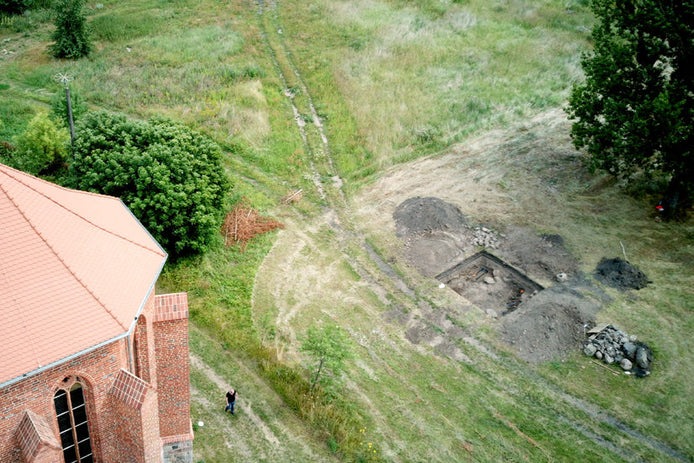The Templar Treasure: Legend, Power and the Search for a Lost Hoard
The treasure of the Knights Templar remains one of the most enduring legends of medieval Europe. It blends historical power, religious conflict and secretive movements into a single mystery that has fascinated researchers for centuries. The Templars were among the richest and most influential military orders of their time, commanding land, gold and political influence across Europe and the Middle East. When the order suddenly fell in 1307, rumors spread that vast amounts of wealth — gold coins, sacred relics and financial records — vanished without a trace. The combination of rapid collapse, missing assets and secretive departures gave birth to a legend that has survived for more than 700 years.
Rise of the Templars and Their Accumulated Wealth
The Knights Templar formed in the early twelfth century as a military and religious order tasked with protecting pilgrims traveling to the Holy Land. Over time, their reputation for discipline and loyalty earned them the trust of European kings, nobles and church leaders. Donations, trade income and military spoils allowed the order to accumulate immense wealth. Beyond gold and silver, the Templars controlled land, fortresses and an early form of banking that enabled secure money transfers across continents. Their network became so powerful that some rulers relied on them for financial stability, further expanding their influence.
By the late 1200s, the Templars managed strongholds in France, England, Portugal, Cyprus and the Middle East. Their wealth was well documented, yet inventories often showed fewer assets than expected, suggesting that part of their holdings remained intentionally hidden. Secret vaults beneath commanderies and reports of undisclosed reserves fuelled early suspicion that the order maintained private treasures not officially recorded. These hidden reserves would later play a central role in the treasure legend.

Source: Dunpharlain, CC BY-SA 4.0, via Wikimedia Commons
The Fall of the Order and the Beginning of the Treasure Myth
On October 13, 1307, King Philip IV of France ordered the arrest of the entire Templar order. Motivated by financial debt and a desire to seize Templar assets, he accused the knights of heresy and corruption. As the arrests unfolded, officials found far less gold and silver than expected, raising immediate questions about missing wealth. Witness accounts from the time describe Templar leaders fleeing Paris the night before the arrest with several wagons, believed to be loaded with chests from the treasury. This was the final confirmed sighting of the order’s wealth.
During interrogations, one Templar allegedly testified that Hugues de Châlons and Gérard de Villers escaped with the French treasury of the order and sailed down the Seine toward the coast. From that point onward, the trail goes dark. No official records document the arrival of the treasure, and no known inventories contain the missing assets. This gap in documentation created fertile ground for speculation — suggesting that the Templars hid their wealth in carefully chosen locations, protected by secrecy and encoded instructions.
Possible Hiding Places and Emerging Theories
Over the centuries, numerous theories have attempted to locate the lost Templar treasure. One of the most enduring points to Rennes-le-Château in Southern France, a region associated with secret tunnels, underground chambers and unexplained wealth in later centuries. Another popular theory involves Rosslyn Chapel in Scotland, whose intricate symbolism and architectural anomalies led some historians to suspect that Templar relics may be concealed beneath its foundations. A third well-known location is Oak Island in Nova Scotia, where complex underground structures and mysterious artifacts have sparked decades of treasure hunting.
The Cultural Pull of the Templar Legend
The Templar treasure persists in global imagination because it represents more than missing gold. It symbolizes secrecy, loyalty and resistance against political betrayal. For many, it is a story about knowledge and power that rulers failed to seize, preserved instead through hidden means. Modern literature, films and documentaries have amplified this fascination, blending fact and fiction into an ever-evolving narrative. Each retelling reinforces the idea that the treasure is still waiting, concealed somewhere beneath ancient stone or forgotten terrain.
Today, researchers and treasure hunters approach the Templar mystery with a combination of historical analysis and modern technology. Ground-penetrating radar, 3D scanners and advanced metal detectors allow teams to examine possible sites more efficiently. These tools have uncovered anomalies in Europe and North America that continue to generate interest, even when results remain inconclusive. The search has become not only a quest for treasure but a deeper exploration of medieval networks, lost archives and architectural secrets.
Whether the treasure was hidden intentionally, moved across continents or gradually lost to time, the myth endures because it captures a unique blend of medieval intrigue and modern possibility. The Templar treasure is not simply a question of gold; it is a connection to a powerful chapter of history that feels close enough to touch, yet forever out of reach. As long as unanswered questions remain, the legend will continue to inspire those who seek the truth behind the knights who once shaped nations and vanished into mystery.
Frequently Asked Questions
Did the Knights Templar truly hide a treasure?
No confirmed treasure has ever been found, but missing inventories and witness accounts suggest something valuable disappeared in 1307.
Where is the Templar treasure most likely hidden?
Popular theories include Rennes-le-Château, Rosslyn Chapel and Oak Island, though none have been verified.
Why were the Templars arrested?
King Philip IV sought to seize their wealth and eliminate their influence, accusing them of heresy to justify the crackdown.
Did any Templars survive the purge?
Yes. Many fled to Portugal and reorganized as the Knights of Christ, continuing parts of the order’s legacy.
Is the search for the treasure still active?
Yes. Researchers and explorers continue to investigate new sites using modern detection technologies.


